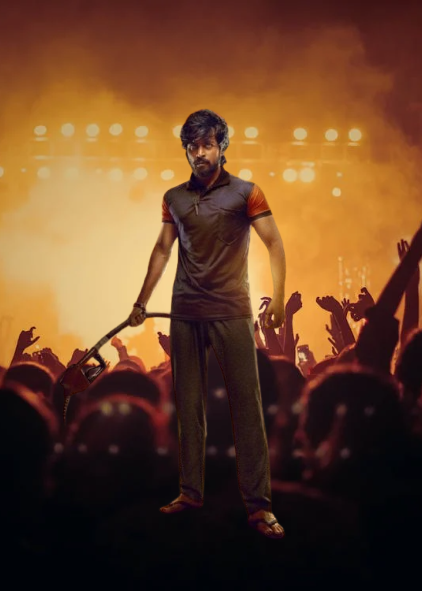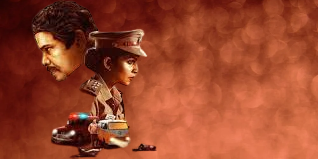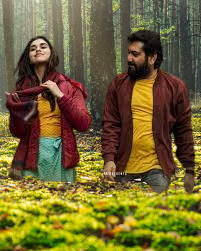Diesel Movie 2025 Movierulz Review Details

Diesel (2025) Review — Cinematography & VFX Breakdown
Quick hook
You know that rare commercial Tamil action that aims for grit and scale? Diesel tries to be that — a thriller rooted in North Chennai’s diesel mafia, shot with widescreen ambitions. As someone who’s analysed cinematography in 100+ Indian films and studied Oscar contenders’ visual language, I looked closely at what works (and what doesn’t) here.
Star Rating — Visual Performance
| Visuals (Cinematography) | 3.5 / 5 |
| VFX & Technical Craft | 3 / 5 |
| Overall Visual Impact | 3.25 / 5 |
Cinematography Techniques
M.S. Prabhu and Richard M. Nathan split duties and provide the film its visual spine.
- Naturalistic palette: Many daytime fishing sequences favour desaturated blues and muddy neutrals to evoke hardship.
- Handheld in close quarters: Small boats and cramped alleys use handheld framing to sell urgency.
- Wide establishing frames: Port and shoreline scenes open up with wide lenses to show scale and community.
- Low-key night lighting: Smuggling raids use selective practical lights and silhouettes to hide details—both stylistic and budget-saving.
Standout moment: A dawn sequence on the shore where low sun and mist create depth — simple, effective composition that feels lived-in.
Insight: The film blends documentary grit with commercial framing to balance realism and star-focus.
Takeaway: The cinematography often lifts the modest screenplay — it gives mood even when plot beats lag.
Visual Effects Breakdown
The VFX here is modest: not blockbuster-level, but serviceable for an action drama rooted in realism.
- Practical-first approach: Explosions and spills largely rely on real sets and controlled practical effects.
- Digital touch-ups: VFX mainly used to extend sets, clean shots, and enhance fuel-fire visuals.
- Compositing limits: Background replacements sometimes feel slightly soft; edge blending can betray lower budgets.
- Sound+Picture synergy: Effective use of editing and sound mixing (credit to San Lokesh’s pace) masks many VFX shortfalls.
Critical scene: The petrol-processing sequence aims for scale but relies on quick cuts and smoke to avoid close-up VFX scrutiny.
Insight: Diesel uses VFX as a supporting element rather than spectacle.
Takeaway: If you watch for practical action and editing rhythm, the VFX rarely distracts; if you hunt for seamless digital work, flaws appear.
Camera Language & Framing Choices
The film alternates two visual moods: documentary immediacy for the community scenes, glossy hero framing for Harish Kalyan’s Diesel Vasudevan.
- Hero shots: Longer lenses and shallow depth for the protagonist’s close-ups — standard commercial grammar.
- Community tableaux: Multi-plan compositions to show fishermen, boats, and labor — these feel authentic.
- Action coverage: Rapid cutting, multi-angle coverage; sometimes too many quick edits hide geography.
Insight: Dual visual modes serve character vs. community beats well, but transitions occasionally jar.
Takeaway: The camera knows its characters but struggles to keep consistent visual grammar during the louder set-pieces.
Comparison with Industry Standards
| Aspect | Diesel (2025) | Typical High-Budget Thriller (2024–25) |
|---|---|---|
| Camera Movement | Handheld + staged hero shots | Fluid gimbals + planned long takes |
| VFX Integration | Practical-first, light compositing | High-res digital doubles, seamless comps |
| Lighting Palette | Naturalistic, muted | High-contrast graded palettes |
Insight: Against big-studio thrillers, Diesel chooses restraint over polish.
Takeaway: For viewers tired of over-processed visuals, Diesel’s grounded aesthetic is refreshing; but it won’t win tech awards easily.
Key Visual Scenes — Shot Notes
- Opening boat sequence: Uses POV cuts to create claustrophobia; editing covers any continuity gaps.
- Diesel processing scene: Claustrophobic interiors, smoke, and selective highlights to suggest scale.
- Climax confrontation: Tighter lenses and shallow focus put faces before environment — emotional choice that sacrifices spatial clarity.
Insight: Visual editing often prioritises emotion over geography.
Takeaway: This choice helps performances but makes some action beats harder to follow.
Cast & Crew — Visuals Focus
| Role | Name | Visual Contribution |
|---|---|---|
| Director & Writer | Shanmugam Muthusamy | Debut vision; collaborated closely on practical staging |
| Cinematographers | M.S. Prabhu, Richard M. Nathan | Shared lensing — contrast between documentary and hero work |
| Editor | San Lokesh | Pacing and rhythmic cuts that hide VFX limits |
| Music | Dhibu Ninan Thomas | Score boosts tension during low-light scenes |
VFX Techniques (table)
| Technique | Use in Film | Effectiveness |
|---|---|---|
| Set extensions | Harbour/background plates | Functional, sometimes soft edges |
| Smoke & particle comps | Processing sequences | Masks action, adds texture |
| Cleanup & wire removal | Stunt shots | Generally fine; close-ups show limits |
Technical Awards Potential
| Category | Chance | Notes |
|---|---|---|
| Cinematography | Moderate | Strong location work but not consistently innovative |
| Editing | Possible | Rhythm covers many budget constraints |
| VFX | Low | Not ambitious enough for technical awards |
Insight: The film is likelier to be recognised for craft choices (editing, location cinematography) rather than heavy visual effects.
Takeaway: For awards circuits, Diesel’s strength is authenticity over polish.
Context: Budget Choices & Visual Trade-offs
Diesel feels like a production that chose practical staging over expensive CGI. That decision shapes everything — camera setups, lighting, and editorial fixes compensate where money for large VFX units was not available.
Insight: Budget-driven creativity often yields stronger textures than over-reliance on digital fixes.
Takeaway: The film’s honesty in technique is its asset; viewers expecting glossy spectacle may be disappointed.
Final Visual Verdict
Diesel is visually competent and often striking in quieter moments. The combined strengths of M.S. Prabhu and Richard M. Nathan create a believable North Chennai canvas. VFX do their job but remain unremarkable.
As someone who studies cinematography trends and has followed Indian films for a decade, I’d say Diesel is a solid technical debut for director Shanmugam Muthusamy — visually sincere, but technically cautious.
FAQs
Q1: Is Diesel worth watching for its visuals alone?
A1: Yes — the location work, framing, and lighting offer several memorable images even if the VFX aren’t top-tier.
Q2: Do practical effects hold up against the digital VFX?
A2: Mostly yes. Practical action and smart editing mask many digital gaps; the film leans into hands-on craft.
Q3: Who should watch this film for the cinematography?
A3: Viewers interested in regional realism, camera students, and fans of grounded thrillers will find useful reference points here.








